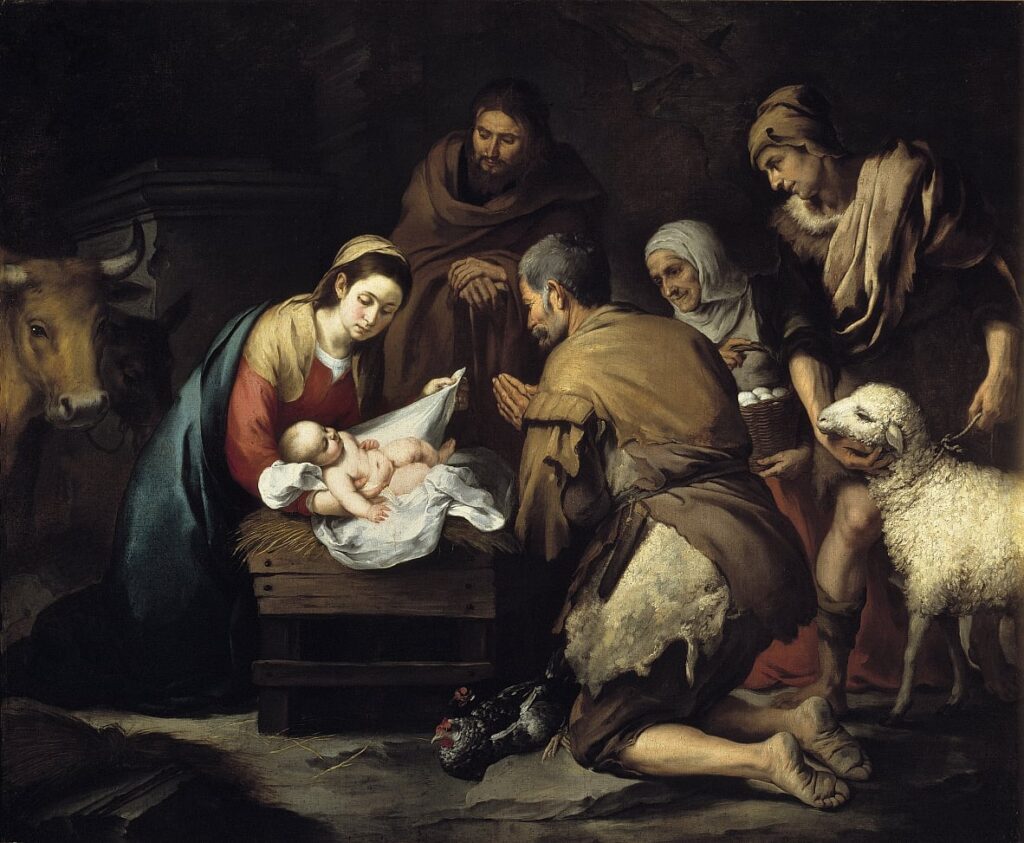
During this time of the year, which is Christmas, music resonates everywhere, especially in Spain. Every household is filled with music, as families sing traditional Christmas songs known as “Villancicos.”
The “Villancico” represents a musical and lyrical expression in Spanish and Portuguese, rooted in the traditions of this two countries, especially during the 15th to 18th centuries. Initially, “villancicos” were secular compositions with a refrain, originating from popular sources and performed with multiple voices. Over time, they became incorporated into ecclesiastical liturgies and gained, more and more, a particular association with the celebration of Christmas.
Typically composed of octosyllabic or hexasyllabic verses, carols follow the following structure:
a) Refrain of two or four verses, announcing the theme.
b)”Mudanza’’ (which literally means to move), consisting of a stanza (or several), often a “redondilla”, metric combination of four eight-syllable verses in which the first and fourth, as well as the third and second verses, harmonize.
c) Return or link: a linking verse and one or two verses that repeat the refrain either wholly or partially.
“Villancicos” were also introduced to the American colonies from Hispanic repertoires and adapted popular songs with religious terms. Initially influenced by Spanish religious styles of the 15th century, they merged with local festivities, incorporating elements from indigenous cultures and languages such as “Náhuatl” or African terms. Additionally, indigenous people performed these carols.
Initially rooted in popular culture, this genre underwent a transformation as it was refined by erudite writers and musicians.
Examples of Villancicos
These “villancicos” encompass multiple songs, both old and new. Some of them have significantly more age, while others are like small museum treasures.
Here, you can listen to a selection of my favorites.
Falalalanlera, Bartomeu Cáceres (1546)
“Villancico” from Cancionero de Gandía, Niño dios d’amor querido, Francisco Guerrero (1589)
Manuscript found in the musical archive of Bogotá, Hoy nace una clara estrella. Anonymus (XVII)
Pastores venid. (Popular “Villancico’’ nowadays)
Influencia Navideña.
Currently, within Spanish-speaking countries, the term “villancico” encompasses a broad and diverse range of popular musical compositions with varied origins, eras, and styles.
In the 18th century, a period during which the “villancico” was still sung in religious celebrations, its use gradually became limited to Christmas festivities. This evolution led to the “villancico” being firmly associated in popular memory as a specific musical genre of Christmas, and its designation extended more generally to refer to any song with a Christmas theme.
Each “villancico”, through its lyrics, represents a different celebration. These lyrics are specific to the 24th and 25th of December, aligning with the birth of Jesus Christ, as well as the arrival of the Three Kings on the night of January 4th to 5th. Hence, we can continue to hear music overflowing from the balconies and windows of Spanish families until early January.


